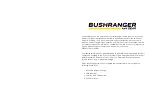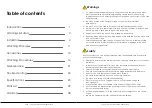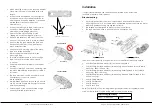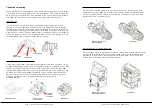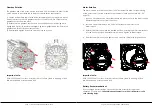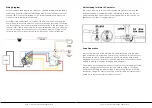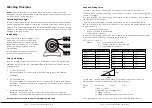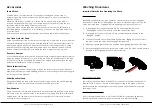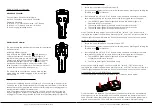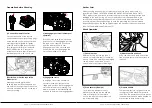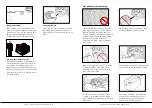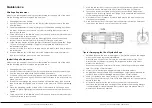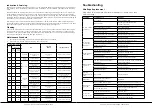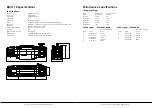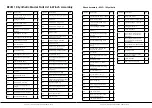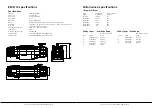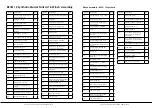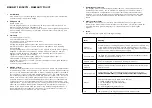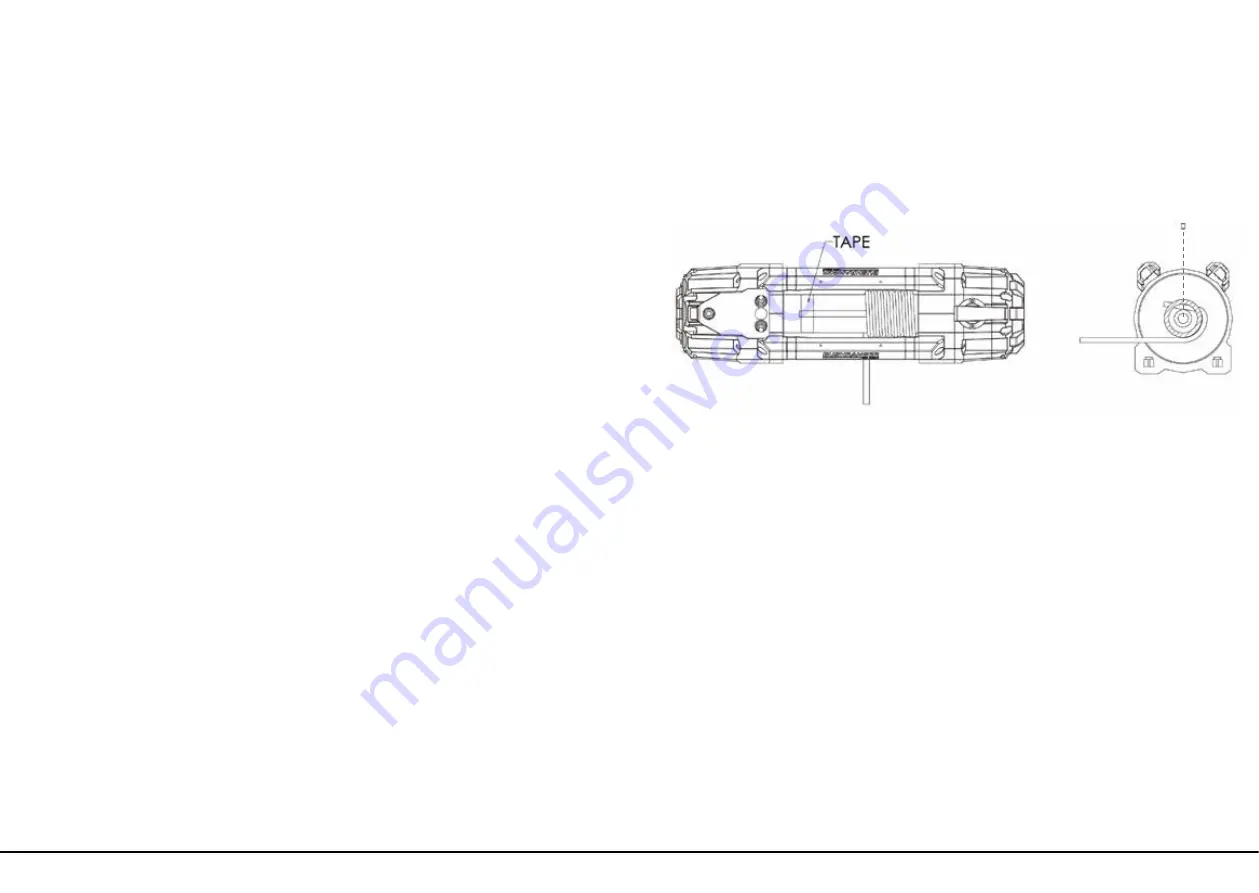
Maintenance
Always use a replacement rope that is correctly rated for the capacity of the winch.
Use the following method to replace the wire rope:
1. Disengage the clutch handle.
2. Spool out the entire wire rope, loosen the set screw and then remove the rope
from the drum.
3. Feed the replacement wire rope through the roller fairlead opening, pass below
the drum, and insert it into the hole on the drum end. Tighten the set screw to
secure the wire rope.
4. Fit the clevis hook to the thimble end of the rope and ensure the split/cotter pin is
correctly installed to secure the pin.
5. Wind the red section of rope onto the drum tightly and evenly (under hand
tension) to have a minimum of five (5) wraps of wire rope on the drum.
6. Follow the procedure outlined in the previous sections “Rope Preparation” (Page
10) and “Winching Procedures” (Page 14) to complete the installation of the
replacement wire rope.
7. A minimum of five (5) wraps of wire rope around the drum is necessary to support
the rated load.
8. A red painted section of the rope warns the operator that there is 3 meters of
rope left on the drum. Do not wind out past this point.
Always use a replacement rope that is correctly rated for the capacity of the winch.
Use the following method to replace the synthetic rope:
1. Disengage the clutch handle.
2. Spool out the entire synthetic rope, loosen the set screw and then remove rope
from the drum and replace the hawse fairlead if necessary.
3. If the end of the rope is not shrink wrapped, cut the lateral side of the end of the
rope at a 45° angle and apply 2-3 wraps of electrical tape to the end to hold cut
strands in place.
4. Thread the rope through the hawse fairlead and under the drum, then insert the
rope all the way through the hole in the end of the drum with 15-20cm protruding
out.
5. Place the protruding section of rope across the drum and tape the end down
to hold it in place. Lightly tighten the set screw to squeeze the rope. Do not over
tighten.
6. Fit the clevis hook to the thimble end of the rope and ensure the split/cotter pin is
correctly installed to secure the pin.
Wire Rope Replacement
Synthetic Rope Replacement
7. Wind the red section of rope onto the drum tightly and evenly (under hand
tension) to have a minimum of ten (10) wraps of wire rope on the drum.
8. Follow the procedure outlined in the previous sections “Rope Preparation”
(Page 10) and “Winching Procedures” (Page 14) to complete the installation
of the replacement synthetic rope.
9. A minimum of ten (10) wraps of synthetic rope around the drum is necessary
to support the rated load.
10. A red painted section of the rope warns the operator that there is 3 meters of
rope left on the drum. Do not wind out past this point.
1. Periodically check the rope for damage or wear. Frayed, kinked or damaged
winch rope must be replaced immediately.
When the rope is used for the first time, the outer filaments may fray. This is
a result of the out filaments breaking. The roughened surface will actually
protect the inner fibres.
Inspect both inner and outer fibres. Open the strands and look for powdered
fibre. This is a sign of internal wear.
2. Protect your rope from rubbing against sharp or abrasive objects.
3. An aluminium hawse fairlead with rounded edges is highly recommended for
synthetic rope as it resists damage more easily than a roller fairlead.
4. Keep your synthetic rope clean and dry. To clean it after use in muddy
conditions, spool out the rope, rinse it with fresh water and let it dry completely
before re spooling.
5. All synthetic ropes are affected by UV rays, chemicals, abrasion and
heatOnce the synthetic rope has begun to deteriorate the breaking strength
is compromised. It is recommended that synthetic rope is replaced every 12
months once fitted or UV exposed
Tips for Prolonging the Life of Synthetic Rope
| REVO VEHICLE RECOVERY WINCH
|REVO VEHICLE RECOVERY WINCH
Page 21
Page 22
Summary of Contents for REVO 10
Page 1: ...REVO 10S REVO 10W REVO 12S REVO 12W ...
Page 24: ......


